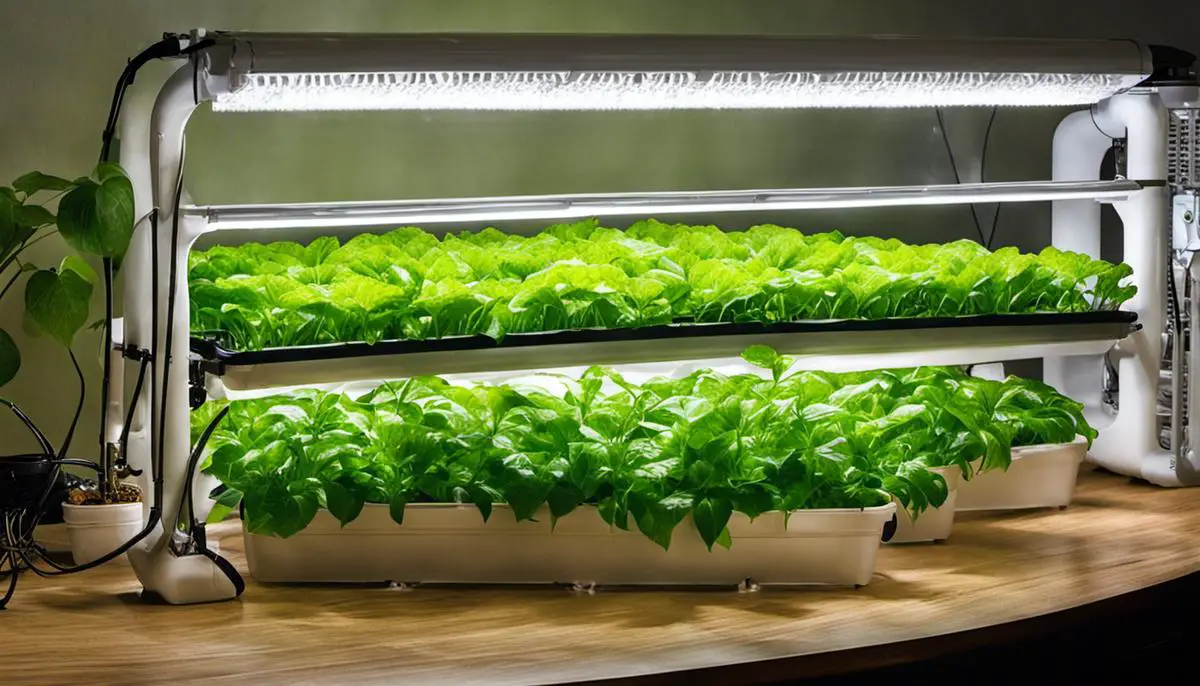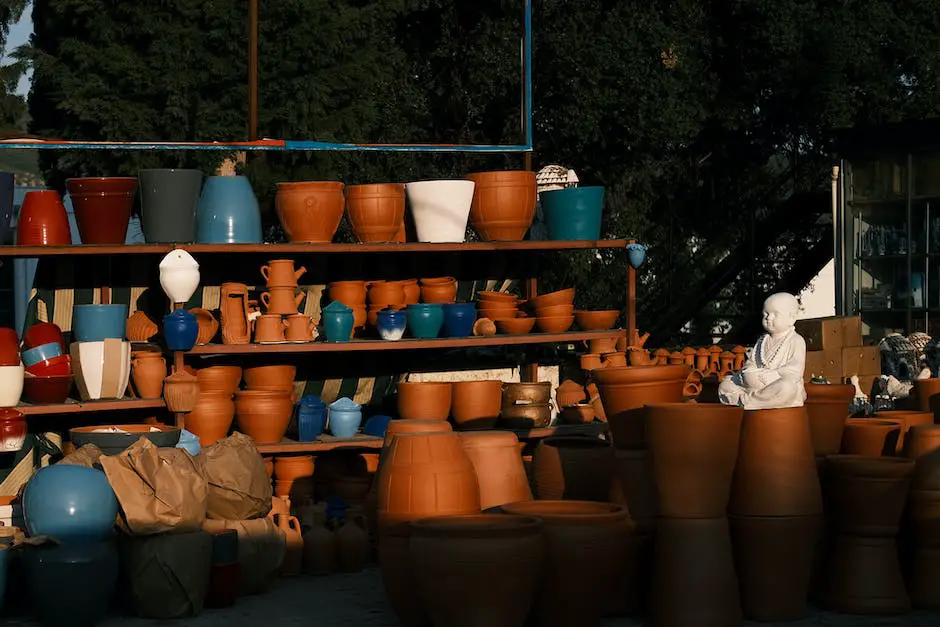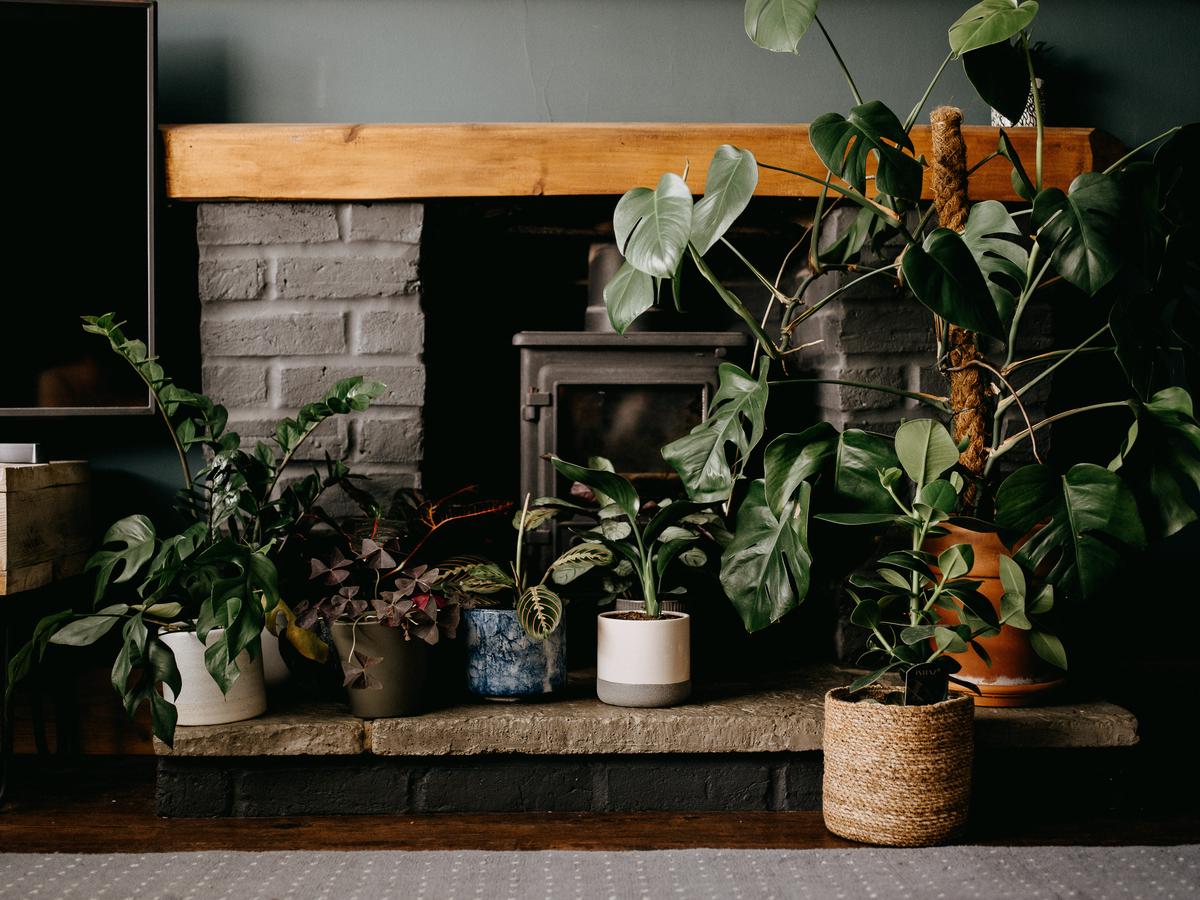Hydroponic Pots for Houseplants: A Comprehensive Guide
In the realm of indoor cultivation, hydroponic pots for houseplants have been making waves in transforming the way green enthusiasts nurture their cherished plant life. As a standalone ecosystem that promises optimal growth conditions, hydroponic cultivation presents a new horizon for houseplant cultivation, promising healthier plants, sustainable practices, and bountiful yields. This document will dissect the concept of hydroponic cultivation, shedding light on its principles, benefits, and challenges. By delving into different types of hydroponic pots, their unique features and functionalities, we will explore how these mechanisms best serve different types of houseplant species and can cater to specific needs. Furthermore, care, maintenance, and advanced techniques in design and usage of hydroponic pots will be explored, guaranteeing that you stay current with industry developments.
Understand Hydroponic Cultivation
Overview of Hydroponics
Hydroponics is a highly productive method of cultivation that doesn’t require soil. Instead, this practice makes use of nutrient-rich water solution, providing the plants with the essential minerals they need to grow. The roots of the plants are suspended in, flooded or misted with the nutrient solution so that they are able to take up the necessary nutrients directly from the water.
Benefit of Hydroponic Pots for Houseplants
The benefits of making use of hydroponic pots for houseplants are numerous. Firstly, the hydroponic method of cultivation allows for faster plant growth when compared to traditional soil planting. This is primarily due to the plants being able to receive their nutrients directly, without the need to extract them from soil. Secondly, the growing medium used in hydroponics usually has superior aeration compared to soil, which leads to a higher oxygen level in the root zone. This in turn results in a stronger and healthier root system.
Another benefit is the option of optimizing the nutrient mix for each type of plant, minimizing nutrient stress and promoting optimal plant growth. Also, hydroponic cultivation uses less water than soil cultivation as the system is usually closed, and generally has fewer pest and disease problems. Also, hydroponics provides you with the ultimate control over your plant’s growing conditions, making indoor gardening a feasible reality.
Practices in Hydroponic Cultivation
There are various methods and techniques employed in the cultivation of houseplants through hydroponics. Some common practices include the use of perlite, coconut coir, clay pebbles or Rockwool as growing medium, and the use of hydroponic pots or propagation trays for houseplants.
It’s also important to choose an optimal nutrient mix for your plants, with the three primary nutrients being Nitrogen (N), Phosphorous (P), and Potassium (K). Secondary nutrients include Calcium (Ca), Magnesium (Mg), and Sulfur (S), while micronutrients include Iron (Fe), Manganese (Mn), Copper (Cu), Zinc (Zn), Molybdenum (Mo), and Boron (B). Some houseplants have unique needs which can be addressed by adjusting the nutrient composition of the solution.
Challenges Associated with Hydroponic Cultivation
As advantageous as hydroponic farming may be, it is not without its challenges. One of them is the financial investment required to set up and maintain the system. Depending on the complexity of the system, hydroponic setups can be quite costly. Additionally, hydroponic system maintenance needs constant attention as plants rely entirely on the cultivating medium for nutrient and water supply.
Furthermore, hydroponic cultivation demands a decent level of skills and knowledge in botany and horticulture. Understanding the dissolved oxygen requirements of the plants, pH levels, electrical conductivity, and temperature of the nutrient solution are examples of this. The margin for error in hydroponic cultivation is quite slim, considering any malfunction or mismanagement may lead to the entire crop failing.
Exploring Hydroponic Pots for Houseplants
Superior in design and functionality, hydroponic pots are dedicated containers ideal for plant cultivation through the hydroponic method. Many of these pots entail a self-contained watering system, complete with water level markers and wicking mechanisms to eliminate the guesswork traditionally associated with watering plants.
In a more rudimentary setup, generic potting containers can be transformed into effective hydroponic pots by introducing a level of clay pebbles or perlite at the base and incorporating a capillary mat for water absorption from the reservoir to the growing medium.
Regardless of the model, all hydroponic pots provide a practical medium for houseplant cultivation, supporting space efficiency and promoting robust plant growth. However, to achieve successful cultivation, a thorough understanding of individual plant requirements and environmental conditions is indispensable.

Types of Hydroponic Pots and Their Features
There is an array of hydroponic pots specially created for houseplant cultivation. Some of the popular types are passive hydroponic pots, water culture hydroponic pots, ebb and flow hydroponic pots, nutrient film technique hydroponic pots, and drip system hydroponic pots.
Passive Hydroponic Pots
Passive hydroponic pots are simple, beginner-friendly systems that work by suspending the plants’ roots in a nutrient solution. These pots typically include a wick that draws the nutrient solution from a reservoir into the root zone of the plants. They are cost-effective, easy to use, and can be used to grow a wide range of houseplants.
Water Culture Hydroponic Pots
Water culture hydroponic pots, on the other hand, involve immersing the roots of plants in water enriched with nutrients. The principal feature of this system is the air pump that ensures oxygen supply to the roots, thereby preventing them from drowning. This system is suitable for water-loving plants but may not work well with plants that require less water.
Ebb and Flow Hydroponic Pots
Moving forward, ebb and flow hydroponic pots incorporate a flooding and draining mechanism. This system pumps the nutrient solution from the reservoir into the growing tray at regular intervals, ensuring that the plant roots are adequately fed. After a certain period, the solution is drained back into the reservoir creating an ebb and flow cycle. This system is ideal for growing a variety of houseplants that require different watering schedules.
Nutrient Film Technique Hydroponic Pots
Nutrient film technique hydroponic pots involve a constant flow of nutrient solution over the roots of plants, which are supported by a slight tilt. This type of pot facilitates superior oxygenation, promoting optimal plant growth and development. Considered advanced, this system is generally used for growing fast-growing, lightweight plants.
Drip System Hydroponic Pots
Finally, drip system hydroponic pots deliver nutrients and water directly to the plant roots via a network of tubes. This targeted delivery system promotes efficient growth but requires careful monitoring and maintenance to ensure the tubes do not get clogged.
Hydroponic pots are equipped with features that facilitate the optimal growth of houseplants. Their functionality is hinged on the fundamental principle of providing plants with the right amount of water, nutrients, and oxygen. This is achieved through effective drainage and oxygenation systems, regulated nutrient delivery, and cyclic water-saturating mechanisms incorporated into the design of these pots.
The main benefit of hydroponic pots is that they enable control of nutrient levels and water supply, enhancing plant growth and yield. They also promote efficient use of space and resources, limit exposure to pests and diseases, and allow for year-round cultivation of plants regardless of the weather conditions.
Selecting the Right Hydroponic Pot
The choice of hydroponic pot largely depends on the type of houseplant being cultivated, the plant’s specific needs, and the gardener’s level of experience and preferences. For instance, beginners may find passive hydroponic pots more straightforward, while more experienced gardeners might prefer the control offered by an ebb and flow hydroponic pot or the nutrient film technique hydroponic pot.
Ensuring that the pot is appropriately sized for your plant is equally crucial. Larger plants may require more substantial systems with higher volumes of nutrient solution, while smaller plants can thrive in compact systems.
To cap it all, the procedure of picking the right hydroponic pot can feel intricate. However, a firm grasp of the diverse systems to choose from, their capabilities and distinctive perks, can simplify the choice. Above all, it is crucial to ascertain that the chosen system appropriately fulfills the intrinsic needs of the plant species being cultivated.

Maintaining Hydroponic Pots and Houseplants
Diving Deeper into Hydroponic Pots and Houseplants
Hydroponic pots present an impressive option for growing plants within controlled settings, eliminating the need for soil. When utilized for houseplants’ growth, a number of factors gain paramount importance like nutrient solutions, water supply, adequate light, and the overall well-being of the pot and plant.
Nutrient Solutions for Hydroponic Houseplants
One of the primary cares for hydroponic pot houseplants is finding the right nutrient solution. Since these plants are not growing in soil, they lack access to nutrients they would naturally gather from the earth. Therefore, supplying an appropriate nutrient solution is key. This solution should include essential elements such as nitrogen, phosphorus, potassium, calcium, magnesium, and trace amounts of other minerals. Many pre-made solutions exist on the market, and it’s crucial to follow the manufacturer’s directions for dosage and application.
Water and Light Requirements
Providing an adequate amount of water is another critical aspect of tending to hydroponic pot plants. These houseplants are solely dependent on water to deliver nutrients, so the water used should be clean and free of harmful chemicals. Considering the light requirements, houseplants differ significantly. Some, like succulents, require a lot of light, while others, such as ferns, can manage with less. Your hydroponic houseplants should be placed in an area that receives both direct and indirect light, ensuring they get enough, but aren’t scorched by the sun.
Troubleshooting Common Issues in Hydroponic Houseplants
Despite the best of care, issues may arise with hydroponic houseplants. Signs like yellow leaves, wilting or stunted growth could signify a problem. One common issue is nutrient burn, causing leaf tip to turn brown. This could be due to excessive nutrient presence in the water. Another problem might be an overwatered plant, a condition evident by brown, drooping leaves. Correct identification of issues is the first step to remedying them.
Maintenance of Hydroponic Pots
Keeping your hydroponic pots in good condition is equally important to the health of your houseplants. Regular cleaning and sanitizing of the pots are necessary. This includes the removal of any old root material and sterilization with a mild bleach solution to keep away pathogens. Furthermore, the pots’ temperature should be consistent, ideally between 68-75 degrees Fahrenheit, as temperature fluctuations can disrupt the plants’ growth.
Overall Process of Hydroponic Houseplant Care
The overall process of caring for hydroponic plants consists of routinely checking the plants and adjusting care accordingly. Monitoring your plants for signs of deficiencies or disease can allow for early treatment. Moreover, regularly checking the hydroponic system to ensure it functions correctly is vital. Pumps, lights, and the nutrient solution need to be in optimal condition for the plants to flourish. Besides, the pH of the water used must be controlled to fall within a certain range – usually between 5.5 and 6.5 – to facilitate nutrient absorption.
Understanding the Essential Growth Requirements
The key to thriving hydroponic houseplants is constructing an ideal growth environment. This involves shielding the plants from adverse weather conditions while also providing them with ample lighting. However, one can’t undermine the importance of ensuring the quality of water and nutrient solution used. Any deviation in the balance of these elements can negatively impact the plants’ growth. Yet, it’s equally important to acknowledge that the definition of ‘ideal’ varies from one plant to another, making it pivotal for the plant owner to continuously adapt and learn for their houseplants to flourish in the hydroponics system.

Photo by anniespratt on Unsplash
Advanced Techniques and Innovations in Hydroponic Pots Design
Hydroponic Pots: The Future of Indoor Horticulture
The emergence of hydroponic pots is a testament to the evolutionary changes sweeping across the world of indoor planting. These unique pots have boldly defied the convention of soil-based planting, creating a platform for plants to draw minerals directly from nutrient-dense water. The variety of hydroponic pots on the market ranges from the bare basics to advanced technologies – an option for every gardener irrespective of their scale of operation or technical prowess.
Evolution of Designs
The design and construction of hydroponic pots have evolved in response to the changing demands of indoor gardening. Early models were simplistic and required manual feeding of the nutrient solution, but with advancements in technology, newer hydroponic pots now provide an automated feeding system. This allows a consistent supply of nutrients to the plants, assuring their proper growth. Some models even come equipped with LED lights that act as artificial sunlight for the plants.
Smart Pots: The New Wave in Hydroponic Solutions
Smart pots take hydroponics a step further with the integration of technology. They regulate the watering cycles, nutrient delivery, and light exposure based on preset schedules or real-time assessment of plant needs. This lends precision to the hydroponic element, ensuring optimum growth conditions for the plants. Some smart pots are also equipped with sensors and can be controlled remotely using smartphones or computers. These high-tech pots have brought the convenience of the digital world to the realm of plant cultivation.
Sustainable Practices in Hydroponics
As sustainability is a pressing concern, hydroponic pots answer the call by making efficient use of resources. They save water by recycling it within the system, reducing the overall consumption when compared to traditional gardening. Hydroponic pots are also generally made out of plastic, but some brands have been innovating by creating plant-based or biodegradable pots to further help reduce environmental impact.
Insights from the Industry
Experts in the field have touted the potential of hydroponic pots to transform the future of indoor gardening. The convenience and precision provided by these pots allow even those without deep horticultural knowledge to grow plants effectively. Additionally, they predict further advancements in smart pots, particularly with regards to more precise sensor technology and artificial intelligence. These developments could revolutionize hydroponic farming, making it even more autonomous and optimized for maximum plant growth and overall productivity.
Growing Houseplants with Hydroponic Pots
Houseplants that grow particularly well in hydroponic pots include herbs like mint, basil, and rosemary. Salad greens such as lettuce or kale are also suitable. Other common household plants like pothos, spider plants, and orchids can successfully be grown hydroponically. Despite the apparent ease of these systems, it’s still important to note that each plant species has its own nutritional and environmental needs, and adjusting the hydroponic system accordingly is crucial for optimal results.
Overall, the use and advancement of hydroponic pots are cementing the union of technology with gardening, creating a more controlled, efficient, and sustainable method of indoor growing. These pots represent a significant leap in the horticultural sector that empower almost anyone to grow plants like a pro, right in the comfort of their own homes.

With an understanding of advanced techniques and innovations in hydroponic pot design, you are now able to leverage the latest in smart pot technology and sustainable practices in the hydroponic industry. The deep-dive into types of hydroponic pots, their features, and applicability towards specific houseplant needs, coupled with an intuitive understanding of care and maintenance practices, equips you with a comprehensive toolkit for hydroponic houseplant cultivation. The journey through hydroponics has not only shed light on its relevance in houseplant cultivation but has also underscored its potential to revolutionize indoor gardening. Thus, by embracing hydroponics, you are opting for a healthier, more sustainable, and indeed, greener future.
